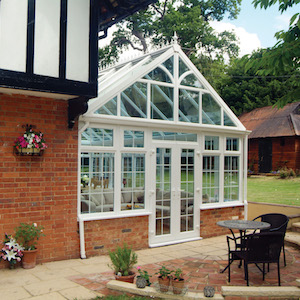Understanding UPVC Windows and Doors: The Ultimate GuideIn the last few years, the popularity of UPVC (unplasticized polyvinyl chloride) doors and windows has actually surged, and for great factor. These products offer a best blend of effectiveness, style, and sturdiness, making them an ideal choice for property owners and builders alike. This post dives into the numerous elements of UPVC windows and doors, exploring their benefits, expenses, maintenance, and frequently asked questions.What is UPVC?UPVC is a kind of plastic that is commonly utilized in the building and construction industry, especially for Window Upvc door and door frames. Unlike routine PVC, UPVC does not include plasticizers, which makes it rigid and appropriate for structural applications. The material is resistant to moisture and ecological destruction, giving it a longer life-span compared to traditional products like wood and metal.Benefits of UPVC Windows and Doors
- Durability: UPVC is extremely resistant to rot, deterioration, and fading, making it an excellent option for environments with extreme weather condition conditions.
- Energy Efficiency: UPVC frames can assist improve the energy performance of homes. They are exceptional insulators, which indicates they can help in reducing heating and cooling costs.

- Low Maintenance: Unlike wooden frames that might require regular painting and sealing, UPVC can just be cleaned with soap and water, preserving its appearance with very little effort.
- Cost-Effective: Although the initial financial investment may be higher than aluminum or wood choices, the long lifespan and low upkeep requirements of UPVC make it a more affordable option with time.
- Aesthetically Pleasing: UPVC doors and windows come in various designs and colors, making sure homeowners can find an alternative that matches their property.
Table 1: Comparison of UPVC with Other MaterialsFeatureUPVCWoodAluminumSturdinessHighly long lastingProne to rot & & decayDeterioration resistantEnergy EfficiencyOutstanding insulationModerate insulationExcellent insulationMaintenanceLow maintenanceHigh upkeepModerate upkeepExpense (Initial)Moderate to highHighModerateLook OptionsWide range availableNatural finishesModern completesKinds Of UPVC Windows and DoorsUPVC items been available in various designs to fit different architectural styles and individual choices. Some common types include:Windows:
- Casement Windows: Hinged at the side, these windows open outward, providing exceptional ventilation.
- Sliding Windows: These windows run on a track, allowing for easy opening and closing.
- Sash Windows: Featuring sliding panes, sash windows provide a conventional appearance and performance.
- Tilt and Turn Windows: Versatile in design, these windows can tilt for ventilation or turn fully for easy cleaning.
Doors:
- UPVC Front Doors: Designed to provide security and insulation, these doors are offered in numerous styles.
- French Doors: These double doors open external and create a seamless link to outside areas.
- Sliding Patio Doors: Ideal for taking full advantage of views and natural light, these doors operate smoothly along a track.
- Bi-fold Doors: These doors can fold back to create an open area, perfect for entertaining or connecting indoor and outdoor areas.
Advantages of UPVC Doors and Windows
- Increased Security: UPVC doors and windows are typically fitted with multi-point locking systems, making them a secure alternative for homes.
- Sound Reduction: The insulation residential or commercial properties of UPVC assistance in lowering noise contamination, creating a quieter indoor environment.
- Eco-friendly: UPVC is recyclable, making it a sustainable choice for ecologically conscious consumers.

- Customizable: With choices for various colors, surfaces, and hardware, UPVC items can be tailored to match any home decor.
Installation ProcessThe installation of UPVC windows and doors is crucial for guaranteeing their performance and durability. Here are the crucial actions included in the installation process:
- Measurement: Accurate measurements of the existing openings are taken.
- Preparation: The old frames are eliminated, and the location is cleaned and prepped for the new installation.
- Placement: The new UPVC frames are placed, ensuring they fit comfortably within the openings.
- Sealing: The frames are sealed utilizing suitable sealing products to prevent drafts and water ingress.
- Completing: Final adjustments are made to make sure the windows and doors operate efficiently, and any complements are added.
Upkeep Tips for UPVC Windows and DoorsTo keep UPVC doors and windows in good condition, the following upkeep suggestions are advised:
- Regular Cleaning: Use a damp fabric or sponge with moderate soap to clean down the frames and glass surfaces. Prevent harsh chemicals that can damage the material.
- Inspect Seals and Locks: Regularly inspect the sealing and locking mechanisms to ensure they are functioning properly.
- Lubricate Moving Parts: Use a silicone-based lubricant on hinges and locks to keep them running efficiently.
- Look for Damage: Periodically inspect for any visible damage or use to resolve problems before they escalate.
Frequently Asked Questions About UPVC Windows and Doors
- The length of time do UPVC doors and windows last?
- UPVC windows and doors can last upwards of 20 years with appropriate upkeep.
- Are UPVC products energy efficient?
- Yes, UPVC uses outstanding insulation residential or commercial properties, which can substantially improve energy efficiency in homes.
- Can UPVC windows be painted?
- While UPVC can be painted, it’s generally not advised, as this might void service warranties and affect the product’s stability.
- Are UPVC products recyclable?
- Yes, UPVC is recyclable, making it an eco-friendly option.
- Can I set up UPVC doors and windows myself?
- While DIY installation is possible, it is recommended to hire specialists for appropriate and secure installation.
In summary, UPVC windows and doors supply a myriad of benefits that make them a wise investment for homeowners. Their resilience, energy effectiveness, low maintenance needs, and broad range of styles place them as an appealing alternative in the market. Understanding the qualities and advantages of UPVC can help consumers make informed decisions when upgrading or building their homes. As sustainability continues to become increasingly important, products like UPVC will stay at the forefront of contemporary building and construction.